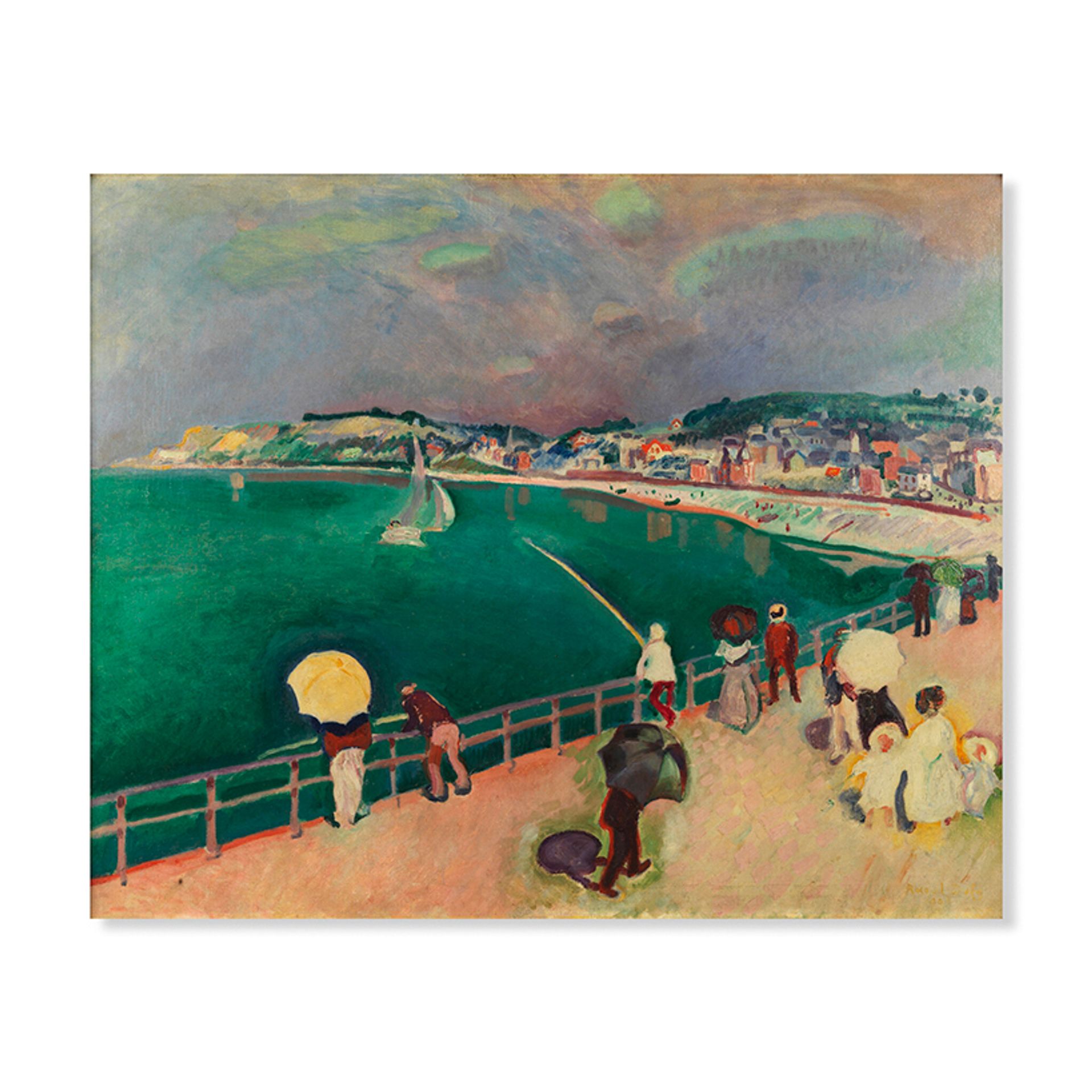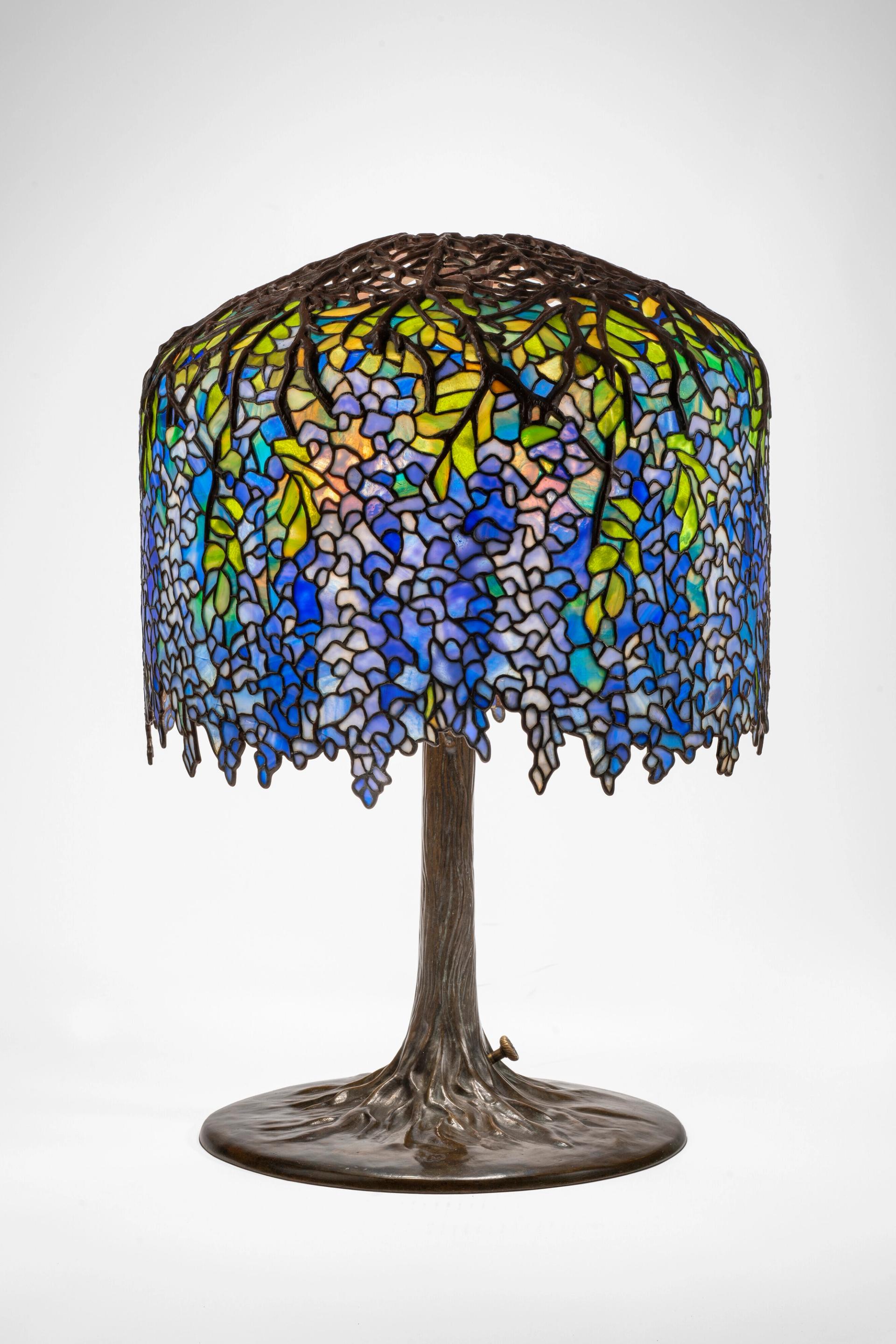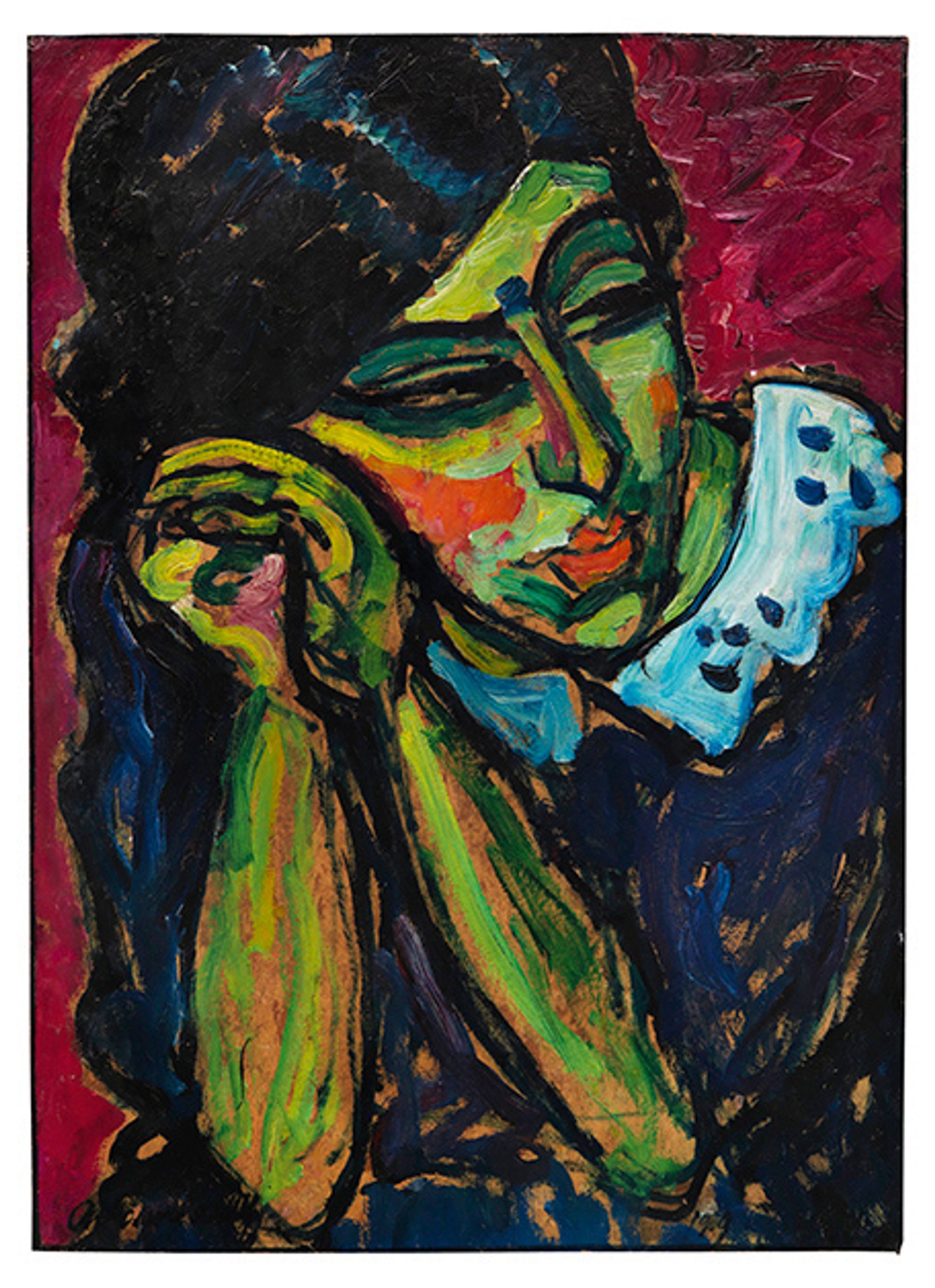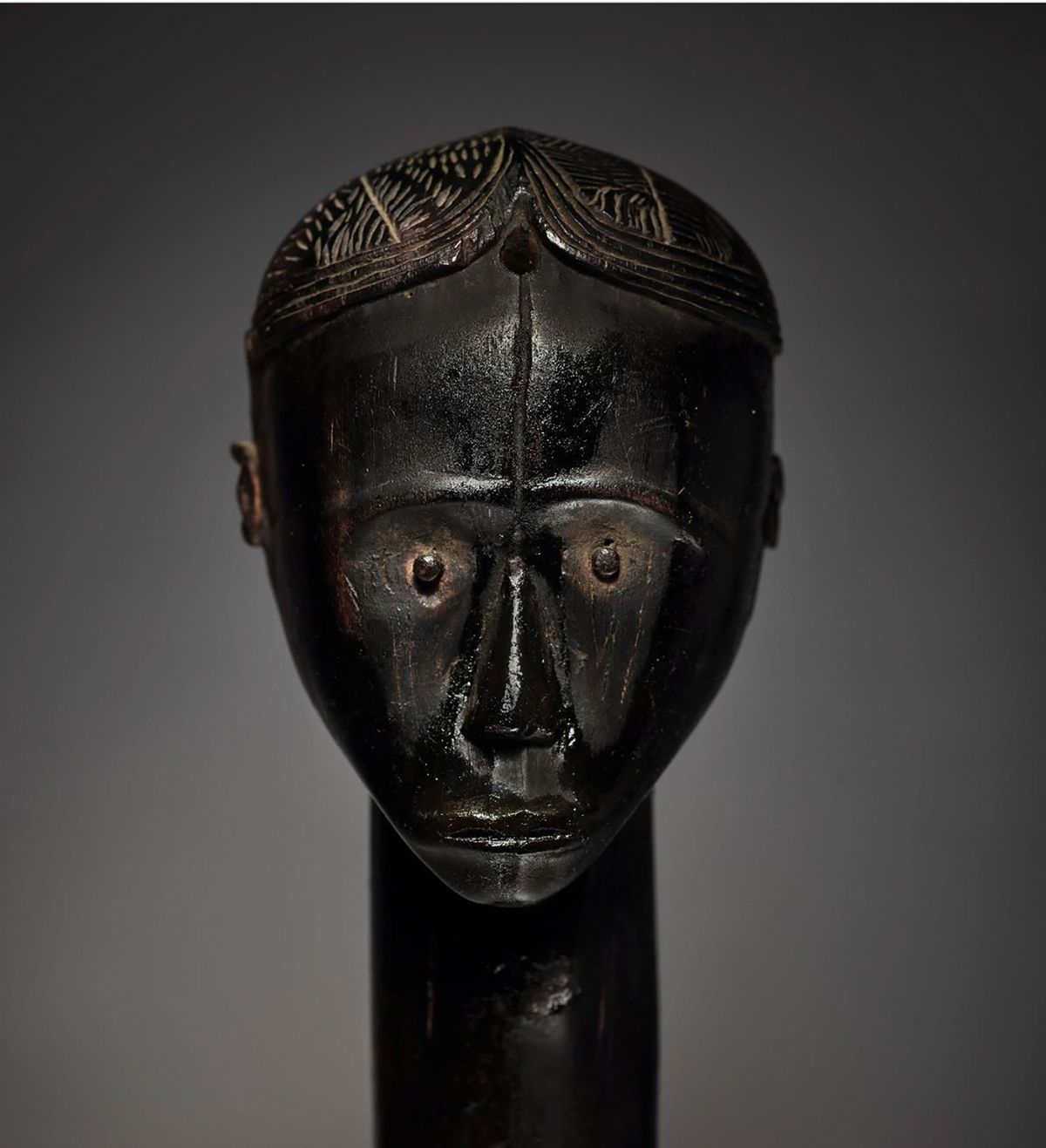Tête de reliquaire, Fang, Gabon, late 19th century
Private Collection of Hélène Leloup, Sotheby’s, Paris, 21 June
Estimate: around €4m
The Fang people of Gabon, Cameroon and Equatorial Guinea historically believed that ancestral relics hold great spiritual power. After the death of significant elders, their skulls were conserved in cylindrical bark containers and guarded by carved wooden heads or figures, such as this example. The fibres of this “Fang byeri” sculpture have been impregnated with a bituminous sludge to give it a black patina. Its hairstyle, with braids and incisions, as well the Adam’s apple, confirm that it depicts a male ancestor figure. Described by scholars as a leading example of 19th-century African statuary, it has been exhibited at the Musée du quai Branly in Paris numerous times, and had its image reproduced most notably for an exhibition at the Centre de la Vieille Charité, Marseille, in 1992. While Western colonisers used the Fang obsession with dead bodies to paint them as violent and backwards, justifying their enslavement and subjugation, this aspect of their culture and the art it produced also provided huge inspiration for European avant-garde artists of the 20th century. The latter was the focus of the prolific dealer of African art, Hélène Leloup, who was the first female dealer in the category when she opened her Paris gallery in 1956. She acquired this work from Helena Rubinstein, herself one of the most prominent collectors of “arts negres”, as the category was termed when she was actively buying. This work leads the first sale of Leloup’s private collection; a second volume of this sale will take place at Sotheby’s New York in 2024.

Raoul Dufy, La baie de Sainte-Adresse (1906) Courtesy Bonhams
Raoul Dufy, La baie de Sainte-Adresse (1906)
Alain Delon: 60 Years of Passion, Bonhams Cornette de Saint Cyr, Paris, 22 June
Estimate: €600,000-€800,000
This Fauvist depiction of the French coast, by Raoul Dufy (1877-1953), comes to the block from the collection of the French actor and sex symbol Alain Delon. Delon won critical acclaim both in France and around the world for now-classic films such as Le Samouraï (1967) and The Leopard (1963). The landscape in La baie de Sainte-Adresse (the bay of Sainte-Adresse) was also a longstanding source of inspiration for Monet, who painted the tiny Normandy commune at least 14 times. Dufy painted this area of France repeatedly, and an abstract version of the same beachscape sold for £187,500 at Christie’s Paris in 2020. Of all his variations on this theme, this painting is the “most accomplished”, says Arnaud Cornette de Saint Cyr, the chief executive of Bonhams Cornette de Saint Cyr. Delon’s collection has been built up over 60 years, beginning with the purchase of his first painting in London at the age of 24. This cross-category and cross-period offering of sculptures and drawings includes works by Jean-Baptiste-Camille Corot and Eugène Delacroix. The total collection, comprising 81 lots, is estimated to sell for between €4m and €5m.

Alberto Giacometti, Tête de Diego au col roulé (1951) Courtesy Sotheby’s
Alberto Giacometti, Tête de Diego au col roulé (1951)
Face Off, Sotheby’s London, 27 June
Estimate: £4m-£6m
Depicting arguably Giacometti’s most enduring sitter, his brother Diego, this sculpture is one of around a dozen examples of a painted bronze by the artist to have ever appeared at auction. It was previously in the collection of Adrien Maeght, who acquired it directly from the artist. Maeght is the chair of the Fondation Maeght in France, established by his art dealer and publisher parents Aimé and Marguerite Maeght, who helped to shape the careers of 20th-century titans such as Giacometti and Picasso, artists who, in turn, helped to create the foundation. The sculpture was also formerly owned by Jan Krugier, a Polish-born Swiss collector who was one of the most prominent dealers of the last century. Stylistically, the catalogue entry notes, it “epitomises the transition within Giacometti’s style after the Second World War from elongated, stick-like figures towards more naturalistic and substantive depictions of human form”. Here Diego is shown wearing a thick roll-neck jumper, reflecting the studio’s ascetic conditions and also the artist’s renewed sense of realism. This work is included in the inaugural Face Off auction at Sotheby’s London, a curated evening sale focusing on portraiture from antiquity to the present day.

Wisteria table lamp, Tiffany Studios (around 1903) Courtesy Christie’s
Wisteria table lamp, Tiffany Studios (around 1903)
The Ann & Gordon Getty Collection: Temple of Wings, Christie’s, New York, 14 June
Estimate: $400,000-$600,000
The second instalment of the Ann & Gordon Getty Collection, focused on 19th- and 20th-century furniture and design from the couple’s Greco-Roman-inspired Berkeley Hills home, the Temple of Wings, comes after a first instalment last year that totalled $150m. Included in the three-part sale is this lamp from Tiffany Studios. The market for Tiffany’s work has seen “upward momentum for the past eight to ten years”, says Victoria Tudor, specialist and head of sale at Christie’s. The world’s most expensive Tiffany lamp sold for $3.3m at Christie’s in 2018. While it is unlikely to break any auction records, the Wisteria model—designed by Clara Driscoll—is a notable example of early-20th-century decorative art by a woman artist, many of whom were overlooked in their time.

Alexej von Jawlensky, Mädchen mit Zopf (1910) Werbefotografie
Alexej von Jawlensky, Mädchen mit Zopf (1910)
Evening sale, Ketterer Kunst, Munich, 9 June
Estimate: €3.5m-€4.5m
Mädchen mit Zopf (girl with braid) by the Russian painter Alexej von Jawlensky was last sold in 2007 at Christie’s New York for $5.1m against an estimate of $3.8m-$4.5m. It is now offered at roughly the same price range, when adjusted for inflation, suggesting a softening of Jawlensky’s market, for which the $18.6m auction record was made in 2008; no sale from the past five years has made the artist’s top 20 prices at auction. Nevertheless, this oil painting, executed on “thin cardboard”, bears a significant provenance. Most notably it comes from the collection of Clemens Weiler, who wrote the first biography on Jawlenksy. Moreover, it was created in Jawlensky’s most in-demand period, between 1908 and 1911, when he was a pivotal member of Der Blaue Reiter (the blue rider), the artist group formed in Munich that was a founding strand of the German Expressionist movement.


